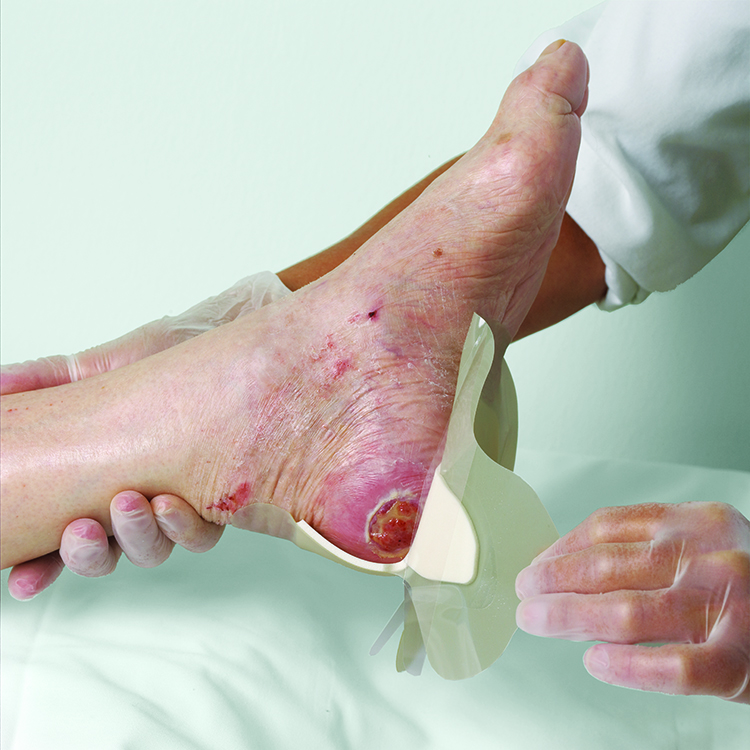How to treat an infected diabetic foot ulcer
In this section, you’ll learn about:
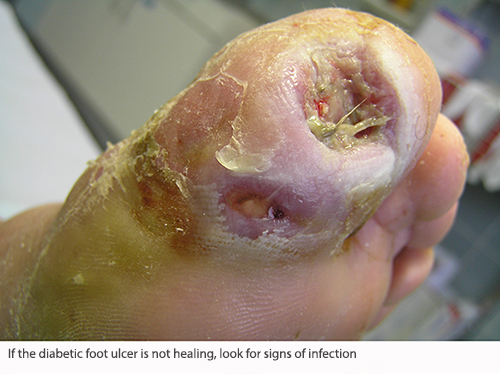
Treating infection promptly prevents amputations
More than 50% of all diabetic foot ulcers become infected and require hospitalisation. Of those, 20% will lead to amputation.1
These statistics highlight the importance of identifying and treating an infected diabetic foot ulcer as early as possible. Research shows that the most important way to prevent amputation is to promptly refer a patient to a multidisciplinary foot team for treatment.2,3
Managing an infected diabetic foot ulcer involves three main steps:
- identifying the infection
- grading the infection
- treating the infection
Let’s take a look at what each step involves.
The consequences of infection3
- Infection precedes 60% of all diabetes-related limb amputations.
- Infection is present in more than 80% of major and minor amputations.
- Patients with an infected diabetic foot are hospitalised more frequently than those without infections.
How do I know a diabetic foot ulcer is infected?
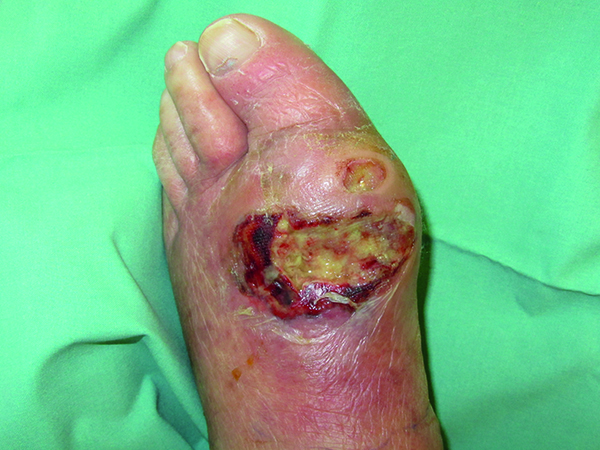
Local swelling and warmth in a Diabetic Foot Ulcer
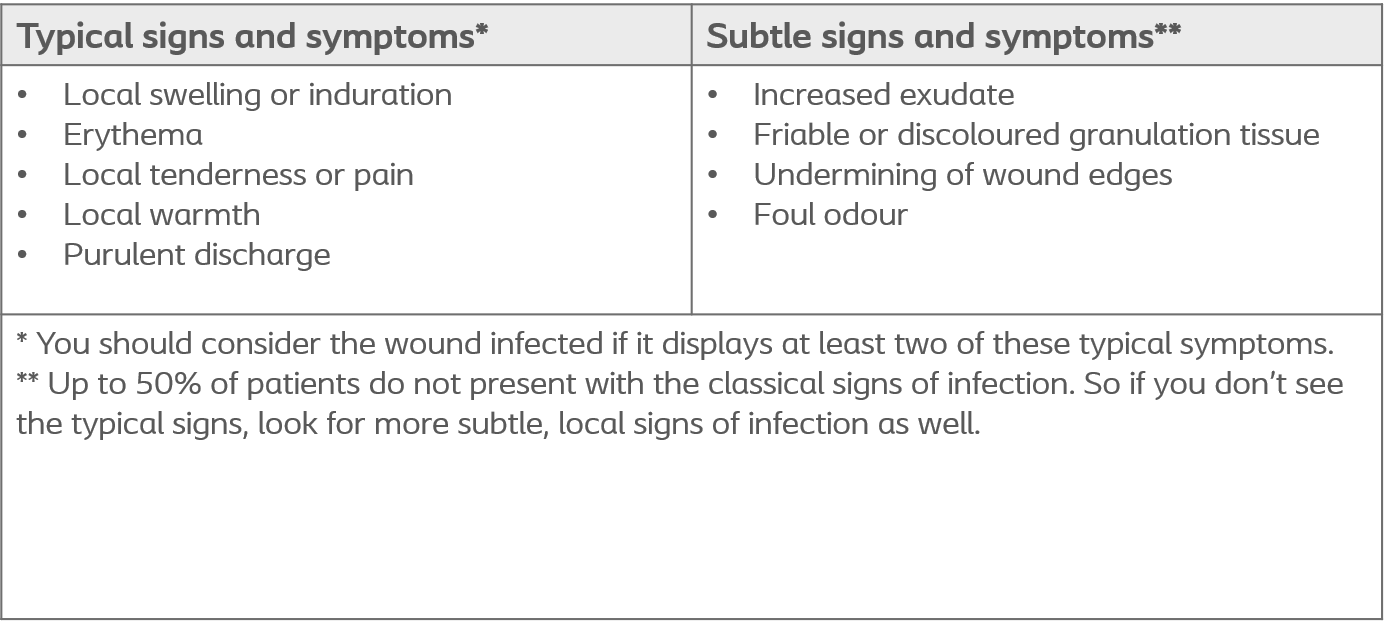
Grading the infection in a diabetic foot ulcer
Once you determine that the wound is infected, your next step is to grade the infection. This will help you select the best treatment option. The Infectious Diseases Society of America (IDSA) has created a grading scale that can help you.5
The IDSA scale has four classifications:
- uninfected,
- mild,
- moderate, or
- severe
After you grade the infection, you can use the IDSA scale to determine what class of antibiotic to use, and whether to treat the patient in an out- or in-patient setting.5
Table 1: IDSA Grading Scale
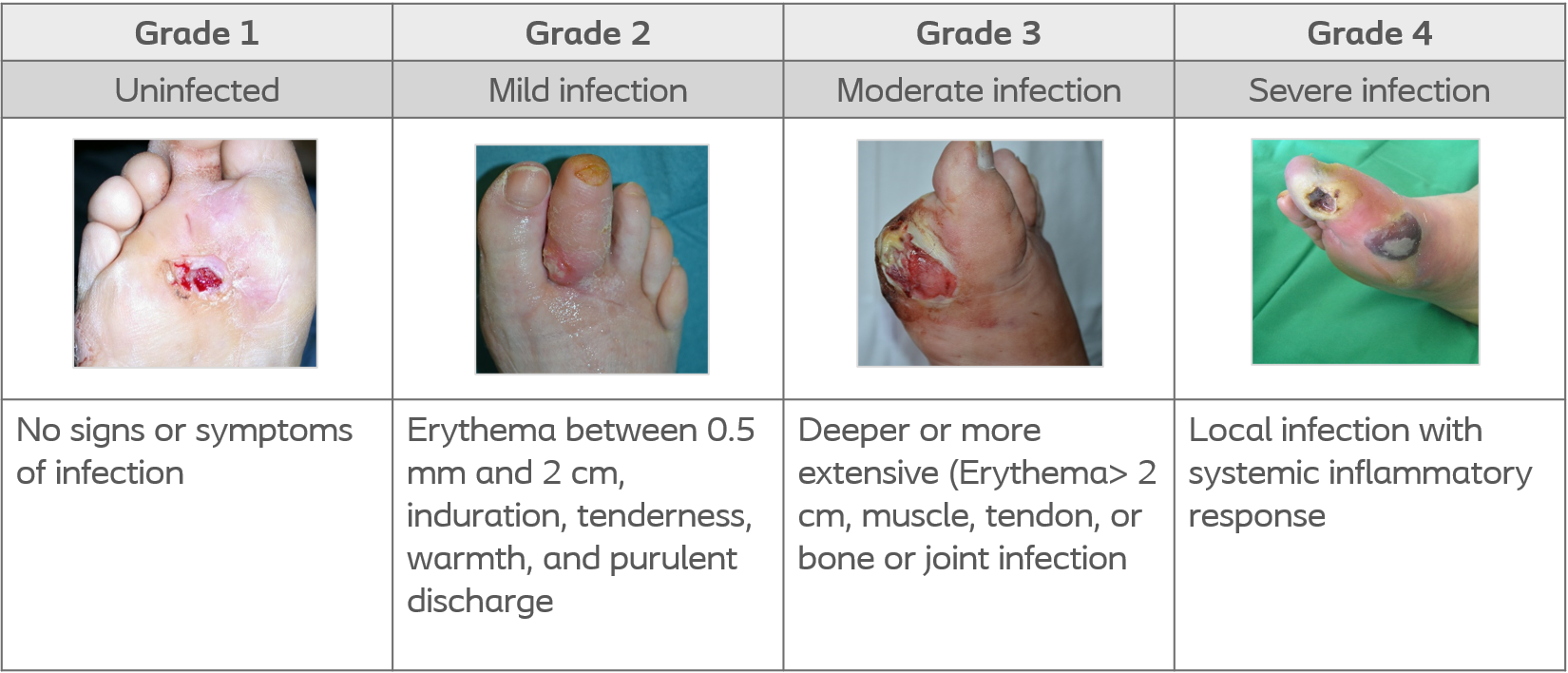
Treating infection in a diabetic foot ulcer
Now that you’ve graded the infection, you’re ready to select the right treatment option.
All infected foot wounds require antimicrobial therapy. When you’re deciding which antibiotic agent to use, consider the following factors:7
- The likely or proven pathogens;
- Their antibiotic susceptibilities (i.e. which antibiotics work against the pathogen);
- The clinical severity of the infection (i.e. the infection’s grade);
- How well the antibiotic works against diabetic foot infection;
- The patient’s history (e.g. allergies or intolerance); and
- The cost of the antimicrobial treatment.
Because the consequences of infection in diabetic foot ulcers are so severe, you will need to be more aggressive and proactive in treating the infection than you would be with other types of wounds. This approach is necessary even when you only find subtle signs of infection.7
References
- Schaper, N. C., van Netten, J. J., Apelqvist, J., Bus, S. A., Hinchliffe, R. J., Lipsky, B. A. on behalf of the International Working Group on the Diabetic Foot (IWGDF) (2019). IWGDF Practical guidelines on the prevention and management of diabetic foot disease.
- Apelqvist, J., Larsson, J. (2000). What is the most effective way to reduce incidence of amputation in the diabetic foot? Diabetes Metab Res Rev; 16 (Suppl 1): 75-83.
- World Union of Wound Healing Societies (WUWHS) (2016). Florence Congress, Position Document. Local management of diabetic foot ulcers. Wounds International.
- International Wound Infection Institute (IWII) (2016). Wound Infection in Clinical Practice - Principles of best practice. Wounds International. 1-32.
- International Diabetes Federation (2017). Clinical Practice Recommendation on the Diabetic Foot: A guide for health care professionals: International Diabetes Federation: Brussels
- Monteiro-Soares, M., Russell, D., Boyko, E. J., Jeffcoate, W., Mills, J. L., Morbach, S., Game, F., on behalf of the International Working Group on the Diabetic Foot (IWGDF) (2019). IWGDF Guideline on the classification of diabetic foot ulcers.
- Wounds International (2013). International Best Practice Guidelines: Wound Management in Diabetic Foot Ulcers.
You may also be interested in…
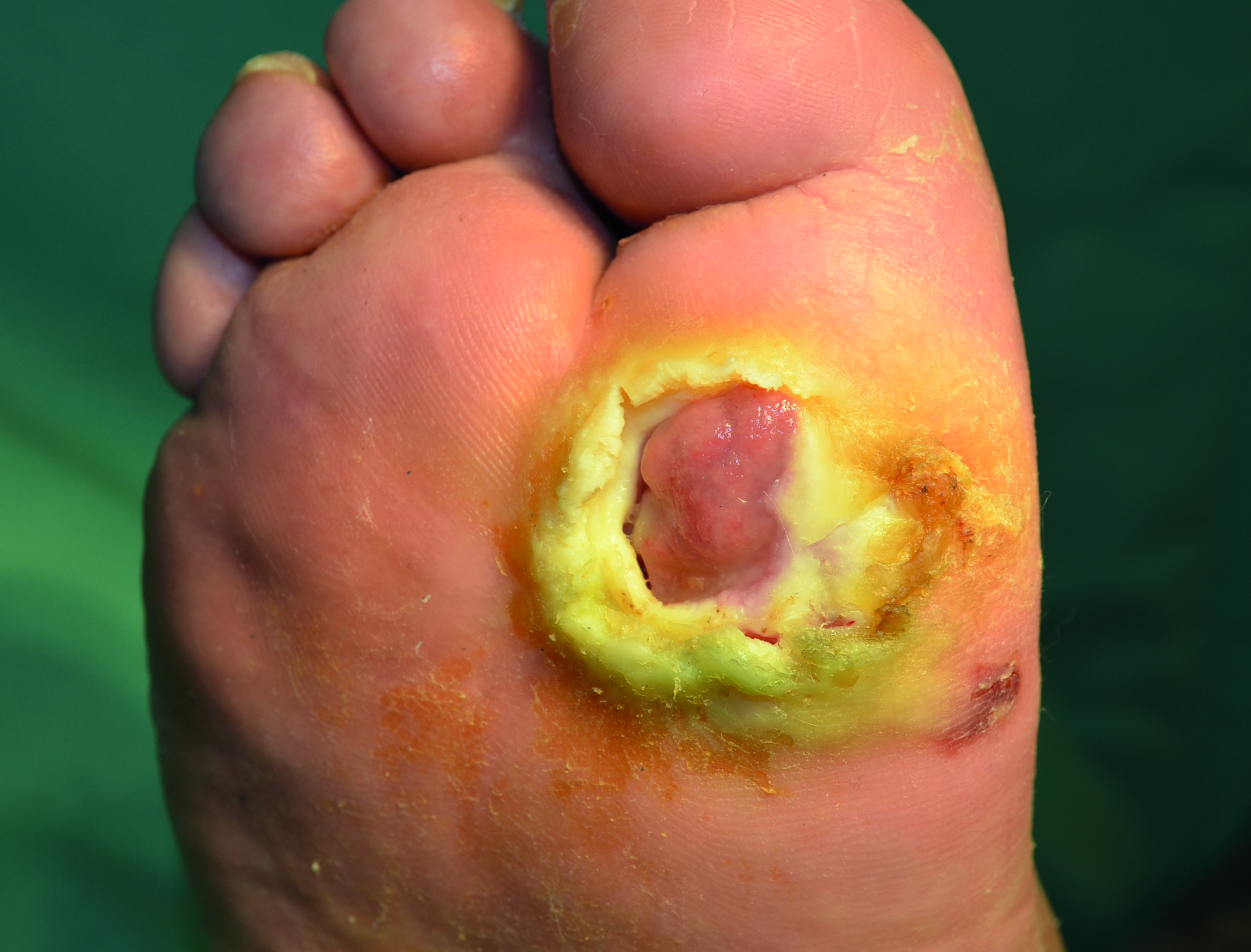
HEAL e-learning
Learn how to identify, assess and manage diabetic foot ulcers with this EWMA-endorsed course.
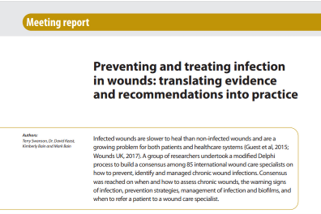
Preventing & Treating Infection
Learn more on how to assess and manage infections and biofilm in clinical practice
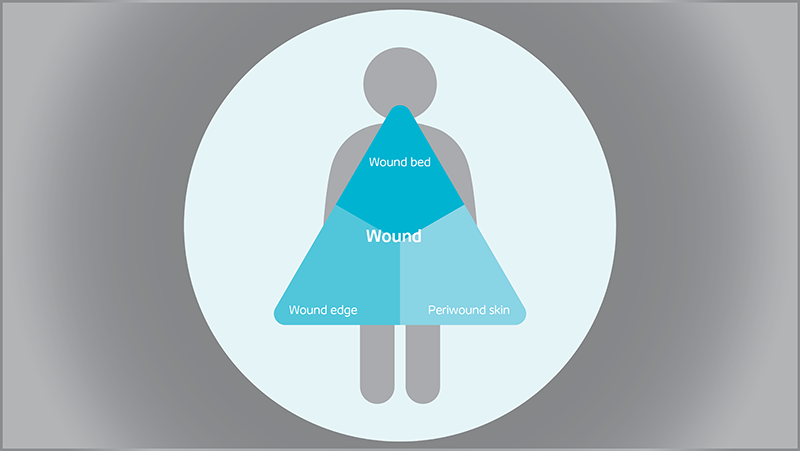
Triangle of Wound Assessment
Conduct a holistic and systematic wound assessment with our tool.

